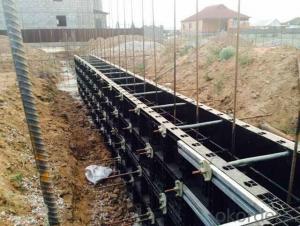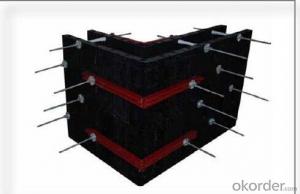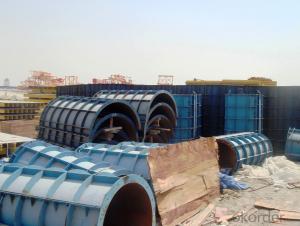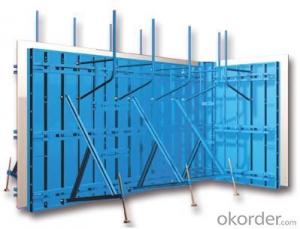easy-set-up plastic formworks used in buildings
- Loading Port:
- Tianjin
- Payment Terms:
- TT OR LC
- Min Order Qty:
- 1 m²
- Supply Capability:
- 100000 m²/month
OKorder Service Pledge
OKorder Financial Service
You Might Also Like
1. Main Introduction of Cup-lock Scaffolding:
The biggest panel is 120x60cm, weight only 10.5kg, which can be lift and set up by only one person easily, need no crane on the site.
2. TheAdvantages of Cup-lock Scaffolding:
-easy set up
Different size of panels can be firmly locked by simply turn the special handles to 90 degree. The panels have rib on the back, which makes the
system need not traditional wood blocks and nails. The panels have holes to fit tie rod, guarantee the strength of the whole system.
-modularity
Modular formwork composed by different size of panels, the main item is 120x60 panel, the size is 120x60cm, which used for the large area of walls
and slabs. There are also small size of panels like 10x60 panel (10x60cm), 20x60 panel (20x60cm), 25x60 panel (25x60cm), inner corner (20x20x60cm) and outer corner (10x5x60cm). Due to the variety of panel size, the system can form almost all size walls120x60 panel (act size 120x60cm) of multiple by 5cm. The material of modular formwork is PC-ABS mixied with special glass fibres which enable panels to hold high pressures.
-strength
The handles are made by high strength Nilon, each panel locked by at least 4 handls, which makes the whole system strong enough to pour 40cm walls.
-enviroment friendly
The system need not cut and nail due to the variety size, and nearly need no wood, the material can be recycled after broken, will not pollute the enviroment.
-consequent
Concrete does not stick to plastic, thus the panels need no oil before using, and can be cleaned simply by water. The surface of the wall which built by modular formwork is smooth, can be left without rework.
3. Images for Plastic formwork:
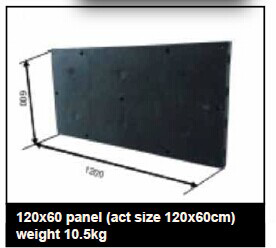
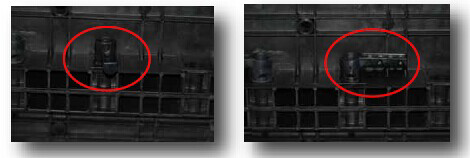
4. FAQ of Plastic concrete formwork
1) What can we do for you?
We can ensure the quality of the vinyl banner and avoid extra expenses for customers.
.We can provide you the professional design team.
.We can provide fashionable and newest styles for you.
.We can design the artwork for you.
. Please feel free to customize.
2) What promises can be done by us?
. If interested in plastic formwork, please feel free to write us for any QUOTE.
. If printing required, please advise asap because the whole set need much more time to complete.
. Please DO check goods when courier knocks your door and contact us asap if any issue.
3) What about of our after-sale service?
. Response will be carried out in 24hours after receiving any complain or request.
. Frame-Connected Scaffolding cost can be refund after order is confirmed.
. If the products are not based on the requirements, there will be the relevant compensations made for you.
- Q:Can steel frame formwork be used for architectural concrete structures?
- Yes, steel frame formwork can certainly be used for architectural concrete structures. Steel frame formwork offers high strength and durability, making it suitable for various architectural designs and complex shapes. It provides stability during casting and ensures accurate dimensions and smooth finishes, meeting the requirements of architectural concrete structures. Additionally, steel formwork can be easily reassembled and reused, making it a cost-effective solution for such projects.
- Q:What are the common safety training requirements for using steel frame formwork systems?
- The common safety training requirements for using steel frame formwork systems include: 1. Proper understanding of the equipment: Users should be trained on the correct assembly, disassembly, and operation of the steel frame formwork systems. This includes knowing the different components, their purpose, and how they fit together. 2. Personal protective equipment (PPE): Trainees should be educated on the importance of wearing appropriate PPE such as hard hats, safety goggles, gloves, and steel-toed boots. They should understand how to properly use, maintain, and inspect their PPE to ensure its effectiveness. 3. Fall protection: Falling from heights is a significant risk when working with steel frame formwork systems. Safety training should cover the use of fall protection equipment such as harnesses, lanyards, and anchor points. Users should be trained on how to properly set up and use these systems to prevent falls. 4. Load capacity and weight limits: Steel frame formwork systems have specific load capacity and weight limits that must be adhered to. Training should focus on understanding these limits and how to calculate and distribute loads safely. Users should be aware of the risks associated with overloading and how it can compromise the stability and safety of the structure. 5. Proper handling and storage: Training should cover the correct methods for handling and storing steel frame formwork components. This includes techniques for lifting, moving, and securing the equipment to prevent accidents and damage. Users should also be educated on how to store the components to maintain their structural integrity and prevent rust or deterioration. 6. Hazard identification and mitigation: Safety training should emphasize the importance of identifying potential hazards on the construction site and implementing measures to mitigate them. Users should be trained to recognize and address hazards such as uneven ground, overhead obstructions, electrical hazards, and inclement weather conditions. 7. Emergency procedures: Trainees should be familiarized with emergency procedures, including evacuation plans, first aid, and reporting protocols. They should understand how to respond to accidents, injuries, or equipment failures and know how to communicate effectively in case of an emergency. Overall, safety training for using steel frame formwork systems is crucial to ensure the well-being of workers and the successful completion of construction projects. It is essential to provide comprehensive training that covers all potential risks and equips users with the knowledge and skills to work safely and efficiently with these systems.
- Q:How does steel frame formwork affect the overall durability of a concrete structure in harsh environments?
- Steel frame formwork can significantly enhance the overall durability of a concrete structure in harsh environments. The use of steel frame formwork provides a robust and rigid support system during the pouring and curing process, ensuring that the concrete retains its intended shape and strength even in challenging conditions. Steel, being highly resistant to corrosion and degradation, offers superior durability and longevity compared to other formwork materials, such as wood or plastic. This resilience helps protect the concrete structure from environmental factors like extreme temperatures, moisture, and chemical exposure, thereby enhancing its overall durability in harsh environments.
- Q:What are the different types of formwork clamps used with steel frame formwork systems?
- There are several types of formwork clamps used with steel frame formwork systems, including wedge clamps, beam clamps, rapid clamps, and screw clamps.
- Q:Can steel frame formwork be used in both horizontal and vertical applications?
- Yes, steel frame formwork can be used in both horizontal and vertical applications. Steel frame formwork is a versatile and durable system that can be easily adjusted and assembled to suit different construction requirements. It provides a stable and rigid structure for pouring concrete and can be used to create walls, slabs, columns, and beams in both horizontal and vertical applications. The steel frame formwork is designed to withstand the pressure exerted by the concrete during the casting process, ensuring a smooth and accurate finish. Additionally, the steel frame formwork can be easily dismantled and reused, making it a cost-effective solution for various construction projects.
- Q:How does steel frame formwork handle the placement of embedments and fixtures within the concrete structure?
- Steel frame formwork is a popular choice for constructing concrete structures due to its durability and strength. When it comes to handling the placement of embedments and fixtures within the concrete structure, steel frame formwork offers several advantages. Firstly, steel frame formwork provides a rigid and stable framework for the concrete, ensuring that embedments and fixtures are securely held in place during the pouring and curing process. The steel frame acts as a support system, preventing any movement or displacement of the embedments, such as rebar or electrical conduits, while the concrete sets. Additionally, steel frame formwork allows for precise positioning of embedments and fixtures. The formwork system typically consists of modular panels or frames that can be easily adjusted and aligned to accommodate the desired location and layout of embedments. This flexibility enables contractors to accurately place embedments and fixtures as per the project specifications, ensuring proper functionality and structural integrity. Furthermore, steel frame formwork provides ample space and accessibility for embedments and fixtures. The formwork system is designed to have pre-determined openings or penetrations, allowing for the easy insertion of embedments and fixtures within the concrete structure. This feature ensures that embedments can be easily integrated into the concrete, without the need for additional modifications or alterations. Moreover, steel frame formwork facilitates the installation of fixtures within the concrete structure. Fixtures such as electrical boxes, plumbing pipes, or HVAC components can be securely attached to the steel frame using various methods, such as welding or bolting. The robust nature of steel ensures that the fixtures are firmly anchored, providing long-term stability and support. In summary, steel frame formwork is well-suited to handle the placement of embedments and fixtures within the concrete structure. Its rigidity, precision, accessibility, and strength make it an ideal choice for safely and effectively incorporating embedments and fixtures into the concrete, ensuring a reliable and durable construction.
- Q:What are the safety certifications required for steel frame formwork?
- The safety certifications required for steel frame formwork typically include ISO 9001 for quality management systems, ISO 14001 for environmental management systems, and OHSAS 18001 or ISO 45001 for occupational health and safety management systems. Additionally, certifications such as CE marking, UL listing, or AS/NZS standards compliance may also be necessary depending on the specific country or region.
- Q:What is the role of tie rods and connectors in steel frame formwork?
- Tie rods and connectors play a crucial role in steel frame formwork systems. These components are used to hold the formwork panels together, ensuring stability and structural integrity during concrete pouring and curing. The primary function of tie rods is to provide lateral support and prevent the formwork panels from bulging or collapsing under the pressure of the concrete. They are typically placed at regular intervals along the perimeter of the formwork system, creating a strong and rigid framework. By connecting the outer panels to the inner ones, the tie rods distribute the load evenly, minimizing the risk of deformation and ensuring a consistent concrete finish. Connectors, on the other hand, are used to secure the formwork panels at their joints. They are specifically designed to create a tight seal and prevent any leakage of concrete during the pouring process. Connectors can be in the form of clamps, pins, or bolts, depending on the specific design and requirements of the formwork system. In addition to their structural role, tie rods and connectors also facilitate the assembly and disassembly of the formwork system. They allow for easy adjustment and alignment of the panels, ensuring a precise and accurate formwork setup. This is particularly important in achieving the desired shape, dimensions, and quality of the final concrete structure. Overall, tie rods and connectors are essential components in steel frame formwork systems, providing stability, strength, and flexibility. Their proper installation and use contribute to the safety, efficiency, and success of concrete construction projects.
- Q:Can steel frame formwork be used for both standard and customized concrete elements?
- Yes, steel frame formwork can be used for both standard and customized concrete elements. Steel frame formwork is versatile and adjustable, allowing it to be easily modified to accommodate various shapes and sizes of concrete structures. It provides strong support and stability, making it suitable for both standard and customized concrete elements.
- Q:Can steel frame formwork be easily integrated with other construction systems?
- Yes, steel frame formwork can be easily integrated with other construction systems. Steel frame formwork is a flexible and versatile system that can be customized to fit the specific requirements of a construction project. It can be easily combined with other construction systems such as scaffolding, slab formwork, and wall formwork. The modular design of steel frame formwork allows for easy assembly and disassembly, making it compatible with different construction methodologies. Moreover, steel frame formwork can be easily adjusted and adapted to accommodate changes in the design or construction process, ensuring seamless integration with other construction systems. Overall, the flexibility and compatibility of steel frame formwork make it an ideal choice for integrating with various construction systems.
1. Manufacturer Overview |
|
|---|---|
| Location | |
| Year Established | |
| Annual Output Value | |
| Main Markets | |
| Company Certifications | |
2. Manufacturer Certificates |
|
|---|---|
| a) Certification Name | |
| Range | |
| Reference | |
| Validity Period | |
3. Manufacturer Capability |
|
|---|---|
| a)Trade Capacity | |
| Nearest Port | |
| Export Percentage | |
| No.of Employees in Trade Department | |
| Language Spoken: | |
| b)Factory Information | |
| Factory Size: | |
| No. of Production Lines | |
| Contract Manufacturing | |
| Product Price Range | |
Send your message to us
easy-set-up plastic formworks used in buildings
- Loading Port:
- Tianjin
- Payment Terms:
- TT OR LC
- Min Order Qty:
- 1 m²
- Supply Capability:
- 100000 m²/month
OKorder Service Pledge
OKorder Financial Service
Similar products
New products
Hot products
Related keywords
